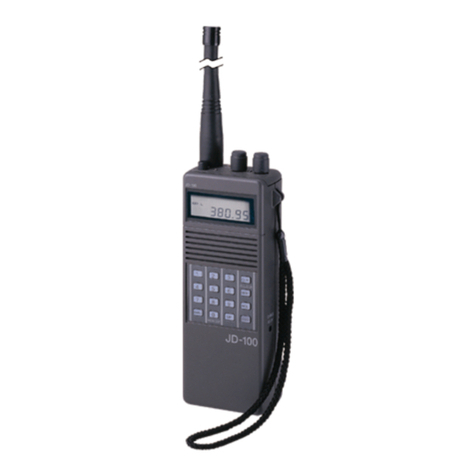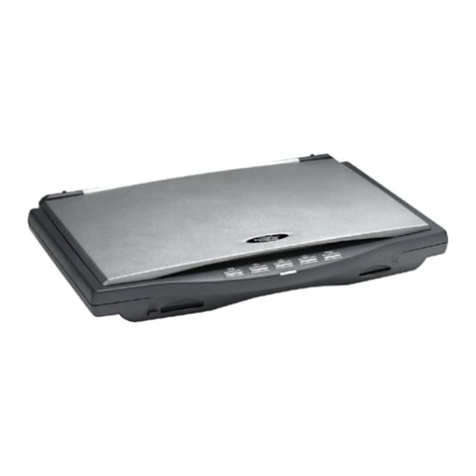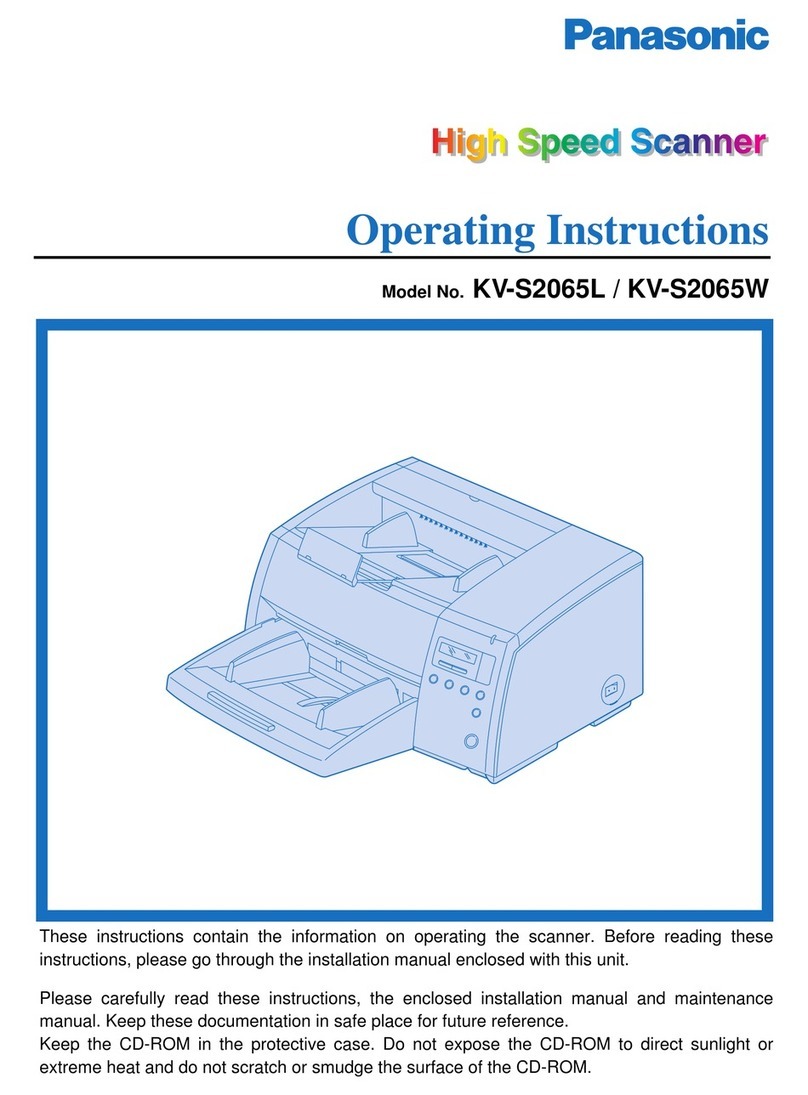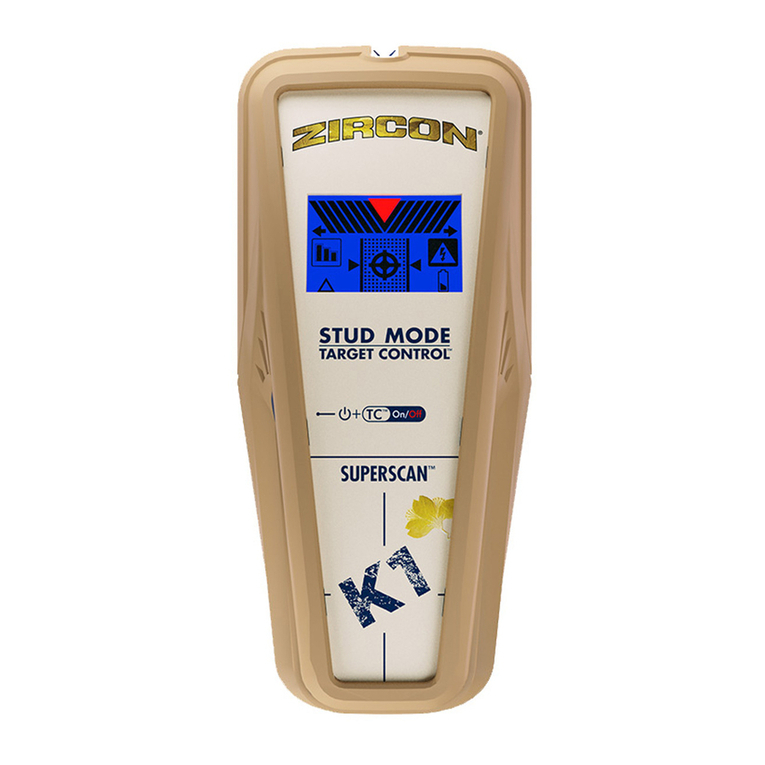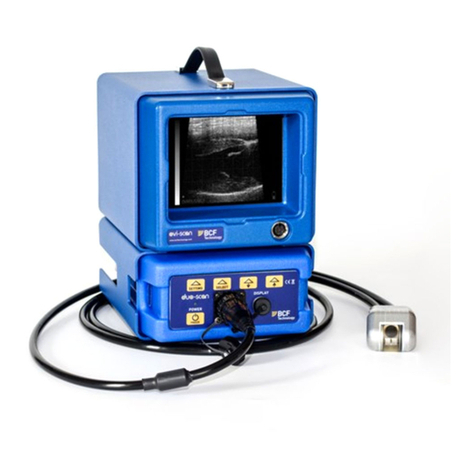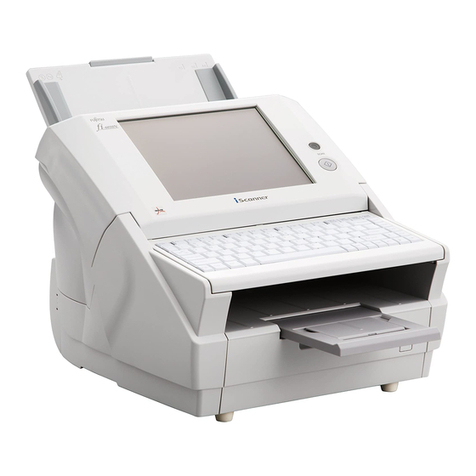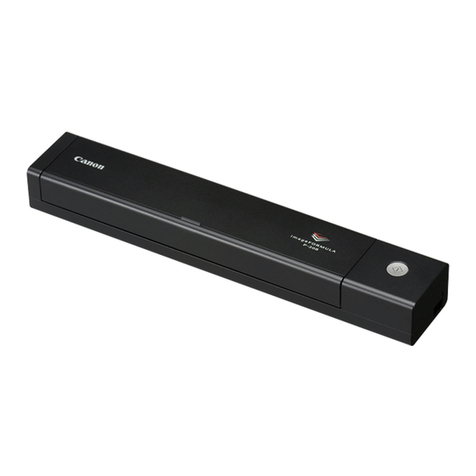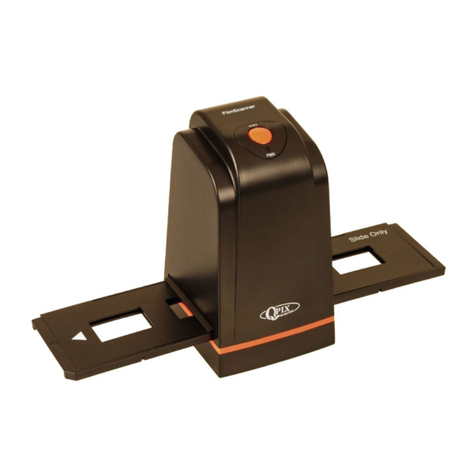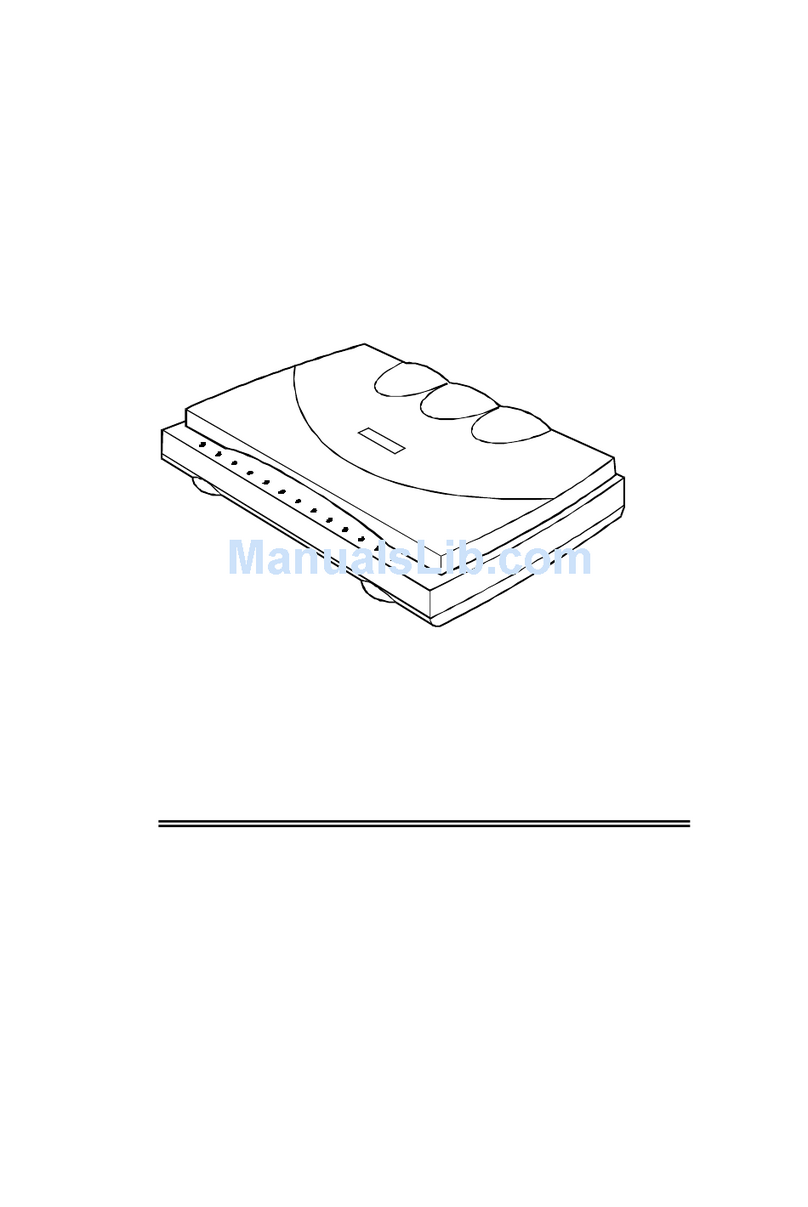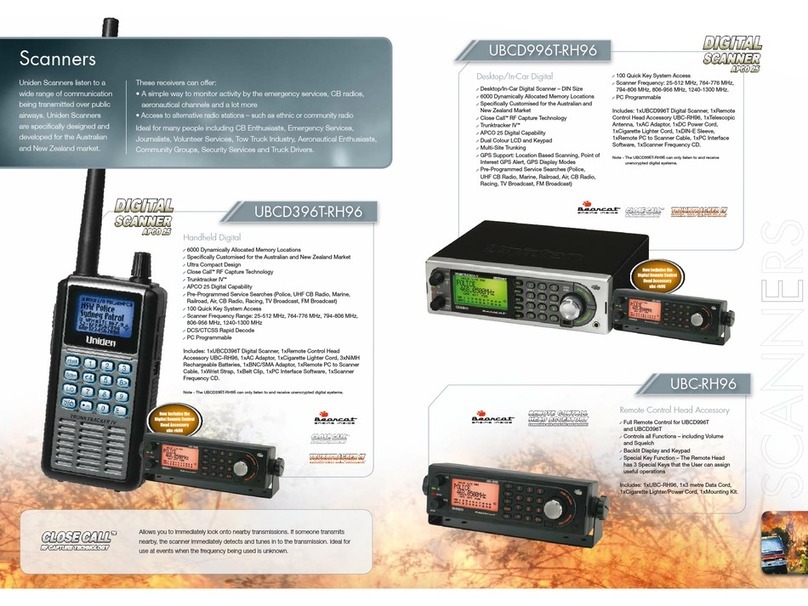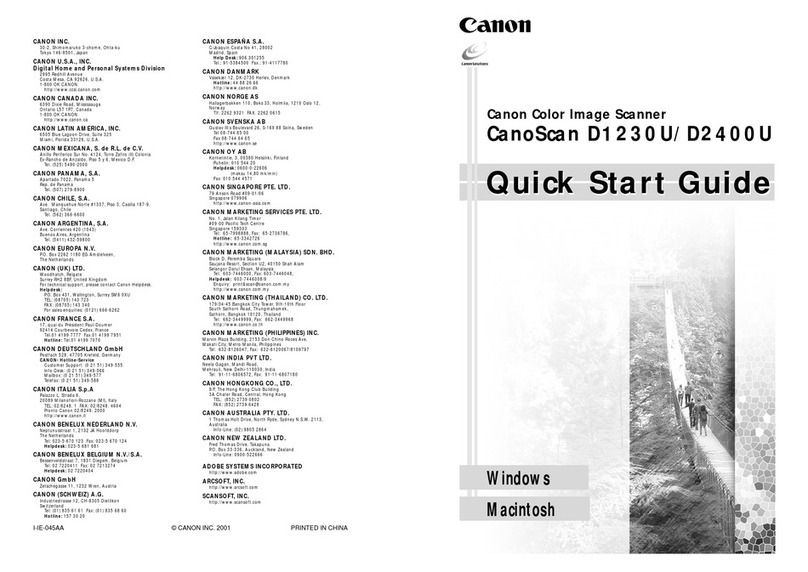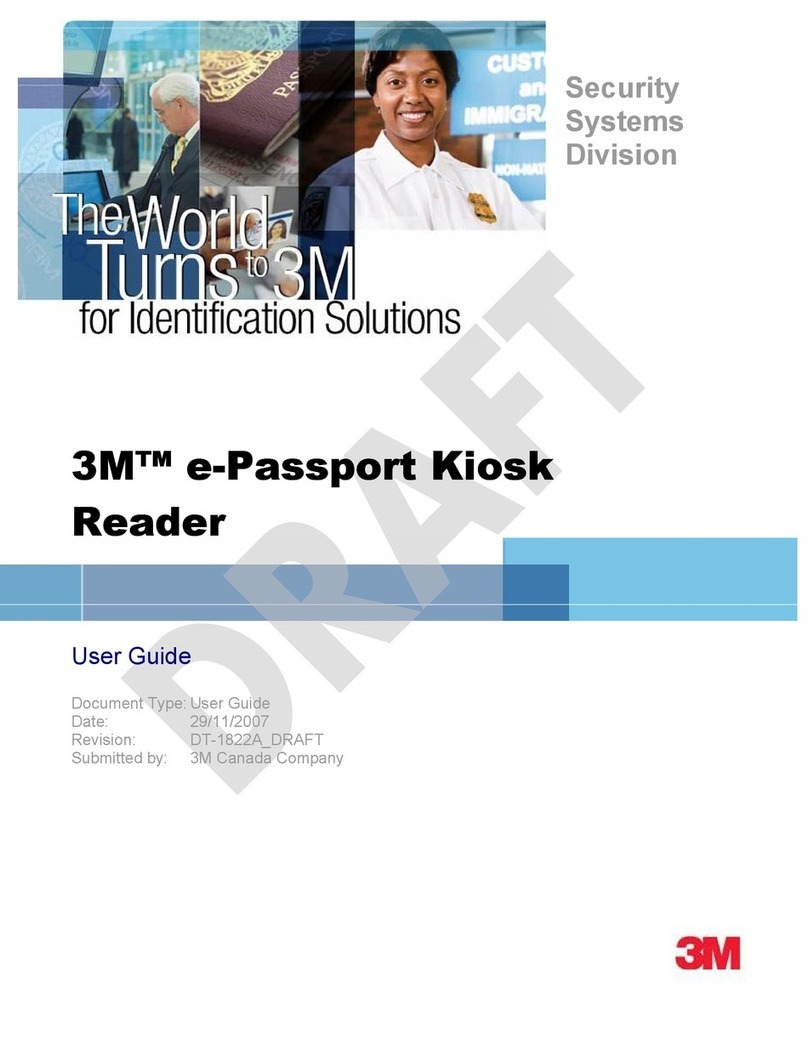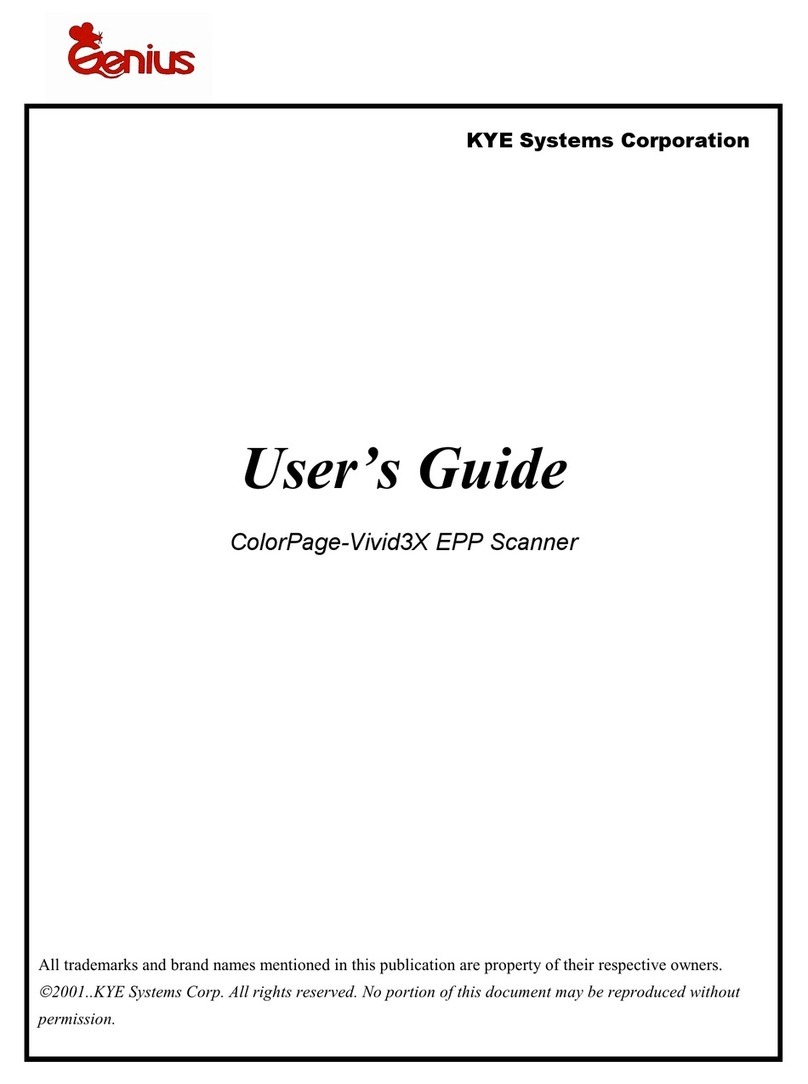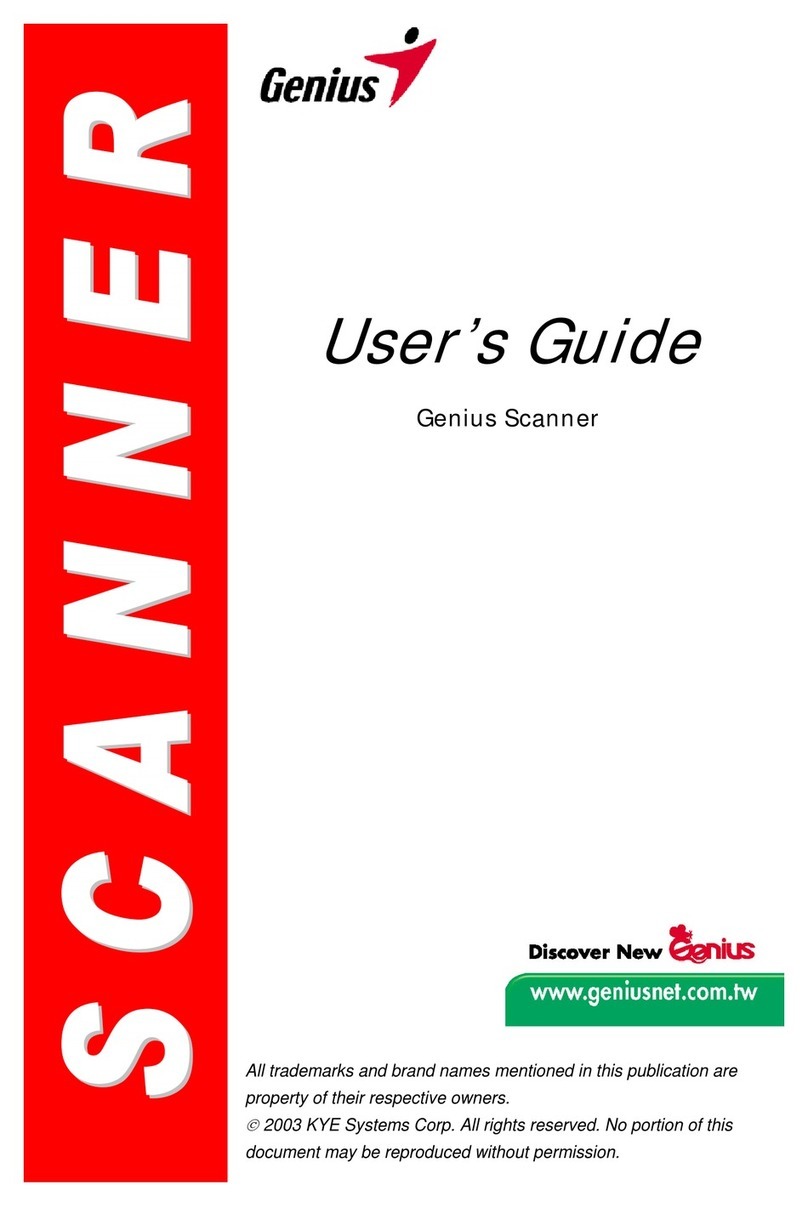Sporty's Air-Scan V User manual

© 2004 Sportsman’s Market, Inc.
Sporty’s®
Air-Scan®V
Scanner with AM/FM Radio &
Aviation Interrupt™
Operator’s Manual

The FCC wants you to know
This equipment has been tested and found to comply with the limits for a scanning receiver,
pursuant to Part 15 of the FCC rules.
These limits are designed to provide reasonable protection against harmful interference in a
residential installation. This equipment generates, uses and can radiate radio frequency energy
and, if not installed and used in accordance with the instructions, may cause harmful interference
to radio communications. However, there is no guarantee that interference will not occur in a
particular installation if this equipment does not cause harmful interference to radio or television
reception, which can be determined by turning the equipment off and on, the user is encouraged
to try and correct the interference by one or more of the following measures:
1. Reorient or relocate the receiving antenna.
2. Increase the separation between the equipment and receiver.
3. Connect the equipment into an outlet on a circuit different
from that to which the receiver is connected.
This device complies with Part 15 of the FCC Rules. Operation is subject to the
following conditions.
1. This device may not cause harmful interference.
2. This device must accept and interference received,
including interference that may cause undesired operation.
Scanning Legally
Your receiver covers frequencies used by some different groups including Aircraft communications
and Military operations, Space-operations, Meteorological-Satellite, Space research, Mobile-
satellite. It is legal to listen to almost every transmission your receiver can receive, however,
there are some transmissions you should never intentionally listen to. These include:
1. Telephone conversations (private means of telephone signal transmission).
2. Any scrambled or encrypted transmissions.
According to the Electronic Communications Privacy Act (ECPA), you are subject to fines and
possible imprisonment for intentionally listening to, using, or divulging the contents of such a
transmission unless you have the consent of a party to the communicaiton (unless such activity
is illegal).
This receiver has been designed to prevent reception of illegal transmissions. This is done
to comply with the legal requirement that receivers be manufactured so as to not be easily
modifiable to pickup those transmissions. Any changes or modifications not expressly
approved by Sportsman's Market, Inc. for compliance could void the user's authority to
operate the equipment. Doing so could subject you to legal penalties.
We encourage responsible, legal receiver use.
Mobile use of this receiver is unlawful or requires a permit in some areas. Check the laws in
your area.

1
Simplified Directions
1. Install the six C cell batteries.
2. Turn the unit on (slide the power switch to the left).
3. Select AM, FM or AIR (AVIATION) by pushing the Band key until the desired band
appears on the screen.
4. Using the keypad, enter the desired frequency.
5. Listen and enjoy.
Directions for Sporty's®Exclusive
Aviation Interrupt™Feature
NOTE: Memory channel 1 has priority over everything including all other
memory channels. Enter the frequency that is most important to
you here.
1. To use the Aviation Interrupt feature, frequencies must first be stored in memory.
A) Select AIR by pushing the Band key until AIR appears on the screen.
B) Using the keypad, enter the desired frequency, such as 122.975.
C) Press the Memory key. The first available memory channel
will be displayed on the screen.
D) Press the Memory key a second time—the frequency is now stored.
E) To store up to four more memory frequencies repeat steps A-D.
2. Select the AM or FM frequency you want to listen to.
3. To activate Aviation Interrupt, press the Interrupt button (2 Key). Now you can
listen to AM or FM broadcasts without missing an important aviation transmission.
4. Press the Interrupt button (2 Key) a second time to exit Aviation
Interrupt and return to normal mode.
Directions for Deleting All Stored Memory Channels
1. Hold down the Clear key while turning on the power.
NOTE: There is no way to reverse this process.

2
Table of Contents
General Information . . . . . . . . . . . . . . . . . . . . . . . . . . . . . . . . . . . . . . . . . . . . . . . . . 3
Introduction. . . . . . . . . . . . . . . . . . . . . . . . . . . . . . . . . . . . . . . . . . . . . . . . . . . . . 3
Features. . . . . . . . . . . . . . . . . . . . . . . . . . . . . . . . . . . . . . . . . . . . . . . . . . . . . . . . 3
Warranty . . . . . . . . . . . . . . . . . . . . . . . . . . . . . . . . . . . . . . . . . . . . . . . . . . . . . . . 4
Precautions . . . . . . . . . . . . . . . . . . . . . . . . . . . . . . . . . . . . . . . . . . . . . . . . . . . . . 4
Controls . . . . . . . . . . . . . . . . . . . . . . . . . . . . . . . . . . . . . . . . . . . . . . . . . . . . . . . . . . . 6
Front View . . . . . . . . . . . . . . . . . . . . . . . . . . . . . . . . . . . . . . . . . . . . . . . . . . . . . 8
Right Side View . . . . . . . . . . . . . . . . . . . . . . . . . . . . . . . . . . . . . . . . . . . . . . . . . 9
Rear View . . . . . . . . . . . . . . . . . . . . . . . . . . . . . . . . . . . . . . . . . . . . . . . . . . . . . 10
Bottom View. . . . . . . . . . . . . . . . . . . . . . . . . . . . . . . . . . . . . . . . . . . . . . . . . . . 10
Operating Instructions. . . . . . . . . . . . . . . . . . . . . . . . . . . . . . . . . . . . . . . . . . . . . . . 11
Manual Frequency Selection . . . . . . . . . . . . . . . . . . . . . . . . . . . . . . . . . . . . . . . 11
Frequency Search . . . . . . . . . . . . . . . . . . . . . . . . . . . . . . . . . . . . . . . . . . . . . . . 12
Frequency Memory . . . . . . . . . . . . . . . . . . . . . . . . . . . . . . . . . . . . . . . . . . . . . . 13
Memory Recall . . . . . . . . . . . . . . . . . . . . . . . . . . . . . . . . . . . . . . . . . . . . . . . . . 14
Memory Scan . . . . . . . . . . . . . . . . . . . . . . . . . . . . . . . . . . . . . . . . . . . . . . . . . . 15
Memory Clear. . . . . . . . . . . . . . . . . . . . . . . . . . . . . . . . . . . . . . . . . . . . . . . . . . 17
Aviation Interrupt™. . . . . . . . . . . . . . . . . . . . . . . . . . . . . . . . . . . . . . . . . . . . . . 17
Low Battery . . . . . . . . . . . . . . . . . . . . . . . . . . . . . . . . . . . . . . . . . . . . . . . . . . . 19
Screen Lighting. . . . . . . . . . . . . . . . . . . . . . . . . . . . . . . . . . . . . . . . . . . . . . . . . 19
Key Tone. . . . . . . . . . . . . . . . . . . . . . . . . . . . . . . . . . . . . . . . . . . . . . . . . . . . . . 19
Accessories . . . . . . . . . . . . . . . . . . . . . . . . . . . . . . . . . . . . . . . . . . . . . . . . . . . . . . . . 20
Specifications . . . . . . . . . . . . . . . . . . . . . . . . . . . . . . . . . . . . . . . . . . . . . . . . . . . . . . 21

General Information
Introduction
This manual contains only operational information relative to Sporty's®Air-Scan®V. This
manual is not intended as a service or maintenance manual and does not contain any theory or
schematic diagrams.
Sporty's Air-Scan V is a desktop scanner with AM/FM/Aviation radio and an exclusive Aviation
Interrupt™ feature. It is ideal for use in your home, office or hangar.
Features:
•Aviation Interrupt — exclusive feature allows you to listen to the ballgame, talk radio
or music and never miss an important aviation transmission.
•2,280 Aviation frequencies (118.000 MHz to 142.975 MHz)
•8.33 kHz spacing on Aviation Band
•118 AM broadcast frequencies (530 kHz to 1630 kHz)
•102 FM broadcast frequencies (87.7 MHz to 107.9 MHz)
•Back-Lit Screen
•Five Memory Channels on Aviation Band
•Full Feature Scanner — Scan the five Memory Channels or
the entire frequency range on each band (AM/FM/Aviation)
•Low Battery Indicator
•External Power, Antenna, and Speaker Options
•Easiest to use desktop radio available
3

4
Warranty
Our Limited Warranty is simple. If, in the first five years, your Air-Scan®Vradio fails due to
defective workmanship or parts under normal use, we will replace it or repair it.
This warranty does not apply to units subject to misuse, battery leakage, neglect or accidents. Nor
does this warranty apply to units damaged by lightning, excess current, moisture, units repaired or
altered outside the factory, units with altered or removed serial numbers, or units used with
accessories other than those listed in the Accessories section of this manual.
To have your unit serviced under this warranty, return it postage paid with proof of purchase to:
Sporty's Pilot Shop, Clermont County/Sporty's Airport, Batavia, Ohio 45103-9747.
NOTE: When returning your unit for warranty service, do NOT
include any accessories.
If your Air-Scan V is no longer under warranty, you may still have it serviced at Sporty's®. Call
Sporty's Customer Service at 513.735.9000 for instructions.
Precautions
•Changes or modifications not expressly approved by the manufacturer for compliance
could void the user's authority to operate the equipment.
•Never attempt to service this unit yourself. It should be referred to qualified service
personnel. Please read the Warranty section in this manual.
•If liquid spills or some solid object falls into the unit, have the unit checked by a
qualified person before further operation.
•Never dispose of batteries in a fire. They may explode.
•Do not leave the radio near heat sources, such as radiators or air ducts, or place the
radio in an environment where it will be subjected to moisture, excessive dust, shock or
mechanical vibration.

•Never touch an external antenna when the danger of lightning is present.
•Abrasive cleaners or chemical solvents may mar or damage the case. Clean the
transceiver with a soft cloth dampened with a mild detergent solution.
•If operating the radio at temperatures outside the range of -20°F to 122°F (-30°C to
50°C), the LCD (screen) may not display the selected frequency. If the Air-Scan®Vis
used in temperatures lower than the recommended range, the characters being displayed
may change very slowly. These irregularities will disappear, with no harm to the
Air-Scan V, when operation is resumed within the recommended temperature range.
5

6
Controls
STEREO
MAX
MIN
®
®
ON OFF
POWER
UP
DOWN
VOLUME
SQUELCH
123CLR
456MEM
789RCL
0
INTERRUPT LIGHT ALL CLR
BAND
front view
a
k
l
m
n
o
p
f
g
h
i,j,
e
d
c
b
q

7
OPEN
OPEN
right view
rear view
bottom view
r
s
t
u
Controls

8
This section serves only to identify and briefly describe the Air-Scan®V's external features. Please
see the Operating Instructions section for detailed instructions on the use of the Air-Scan V.
Front View
(A) Squelch
Rotate clockwise to increase squelch and counterclockwise to decrease squelch on the
Aviation Band.
(B) On/Off Switch
Push to the left to turn unit on. Push to the right to turn unit off.
(C) Volume
Rotate clockwise to increase volume, counter-clockwise to decrease volume.
(D) Screen
This LCD displays the current band and frequency.
(E) Internal Speaker
(F) Numeric Keypad
These keys are used whenever the Air-Scan V requires a numeric
input such as setting the frequency.
(G) Down Key
This key is used to select the next lower frequency and to initiate search and scan functions.
(H) Up Key
This key is used to select the next higher frequency and to initiate search and scan functions.
(I) Memory Clear Key
This key is used to delete a selected memory channel.
(J) All Clear Key
This key is used to delete all memory channels.
(K) Clear Key
This key is used to clear erroneous key entries and to exit functions such as search, scan,
memory storage and recall.

9
(L) Memory Key
This key is used while storing frequencies in one of the five memory channels.
(M) Recall Key
This key is used to recall stored frequencies from the
five memory channels.
(N) Band Key
This key is used to select the band (AM, FM or Aviation).
(O) Light Key
This key activates the back lighting for the screen.
(P) Interrupt Key
This key is used to activate and deactivate the exclusive
Aviation Interrupt™ feature.
(Q) Stereo Light
This feature works when the FM channel has a stereo broadcast signal and either an external
speaker or headphones are connected.
Right Side View
(R) Earphone Jack
Astandard Walkman®style headphone may be plugged into this jack. The internal speaker is
disabled when this jack is used.

10
Rear View
(S) DC Adapter
(T) Speaker
Bottom View
(U) Battery Cover

11
Manual Frequency Selection
The Air-Scan®Vwill receive 2,280 Aviation frequencies (118.000 MHz to 142.975 MHz), 118 AM
frequencies (530 kHz to 1700 kHz) and 102 FM frequencies (87.7 MHz to 107.9 MHz). The
frequency currently selected and band are always displayed on the Air-Scan V's screen.
From the example above, the Air-Scan V is receiving 122.975 MHz.
To manually enter a desired frequency, first select the proper band (AM, FM or Aviation) by
pressing the Band key. The current band will be displayed on the left side of the Air-Scan V's
screen.
Once you have selected the desired band, enter the frequency using the numeric keypad.
NOTE: Six digits are always required to select a frequency
on the Aviation Band.
The Air-Scan V will return to the previous frequency if there is a pause of five seconds or more
between key entries while entering a new frequency. The Clear key may be pressed any time prior
to entering the last digit to clear the digits entered and return to the previous frequency.
Any frequency outside of the range of the current band will not be accepted. The Air-Scan V will
beep when such a digit is entered. For example, starting any frequency selection with a number
other than 1 on the Aviation band or attempting to place a 5, 6, 7, 8 or 9 in the second digit on the
Aviation band will result in a beep.
122.975
AIR
Operating Instructions

12
Frequency Search
To manually search through the frequency range of any of the bands (AM, FM or Aviation), the Up
key or Down key may be pressed at any time to select the next higher or lower frequency. This
uses 10 kHz steps in the AM frequency range, 100 kHz steps in the FM frequency range and 8.33
kHz steps in the Aviation frequency range. The Up and Down keys may be pressed repeatedly to
continue changing the selected frequency.
To automatically search the entire frequency range of the current band for a broadcasting signal,
the Up key or Down key may be pressed and held for one second. The Screen will display SRCH
as seen below.
The frequencies will either scroll up or down depending upon whether the Up or Down key was
used to initiate the search.
When a broadcasting signal is found, the Air-Scan®Vwill stop temporarily on that frequency. If
the broadcasting signal is cut off for more than two seconds, the search will resume until another
signal is found. When the end of the frequency range is reached during an upward search, the
search automatically continues searching at the beginning of the frequency range. Likewise, when
the beginning of the frequency range is reached during a downward search, the search
automatically continues at the end of the frequency range.
The search may be canceled at any time by pressing the Clear key. The direction of the search
may also be reversed at any time by pressing and holding the Up or Down key (whichever is
appropriate) for one second.
NOTE: On the Aviation band it is very important that the squelch
be properly adjusted prior to initiating a search. The
background static received with the squelch off may be
strong enough to disrupt a search. If a search gets "stuck"
on a frequency with too much background noise, increase
the squelch or press and hold the Up or Down key for one
second to skip that frequency and resume searching.
AIR SRCH
122.975

13
Frequency Memory
The Air-Scan®Vhas five memory channels on the Aviation band numbered 1 to 5 to store those
aviation frequencies used most often and for use with the Aviation Interrupt™feature.
NOTE: In Aviation Interrupt mode, memory channel 1 has priority
over everything, including all other memory channels.
Enter the frequency that is most important to you in memory channel 1.
To store a frequency, select the Aviation band by pressing the Band key until AIR appears on the
screen. Then select a desired frequency, such as 122.975 to be stored by using either manual
frequency selection or frequency search. To store this frequency, press the Memory key. The
following screen will appear:
The first available memory channel will be displayed on the screen. In this example, memory
channel 2 is the first available location, meaning that a frequency is already stored in memory
channel 1. To store the frequency, press the Memory key a second time.
You may also overwrite an existing memory channel or select an available memory channel other
than the first one displayed. Once again, select the desired frequency on the Aviation band and
then press the Memory key.
Now press either the Up or Down key to scroll through the five memory channels. If a memory
channel is already storing a frequency, the memory channel number and the stored frequency will
be displayed.
01
MEM
2
AIR

14
Once the desired memory channel is selected, press the Memory key and the frequency will be
stored. If you are overwriting an existing memory channel, the Air-Scan®Vwill beep to let you
know that a frequency is already stored there. You must push the Memory key a second time to
store the new frequency. Remember, the old frequency will be erased when your selected
frequency is stored.
You may exit the memory function by pressing the Clear key any time prior to storing the
frequency (pressing the Memory key the second time).
Memory Recall
To recall a frequency stored in a memory channel, select the Aviation band by pressing the Band
key until AIR appears in the upper left-hand corner of the screen. Then press the Recall key. The
memory channel number and the corresponding frequency of the first memory channel that is
being used will be displayed. This frequency immediately becomes the active frequency and is
received by the Air-Scan V.
In this example, memory channel 2 is listed first, meaning that no frequency is currently being
stored in memory channel 1.
At this point you may select any stored memory channel by pressing the Up or Down key to scroll
through the stored frequencies. For example, to receive memory channel 5 you may:
1. Press the Recall key followed by the Up or Down key to scroll to 5.
Once in the Recall mode, the Air-Scan®Vstays in Recall until the Clear key is pressed. This
allows you to sequence your frequencies in the order you may wish to use them. For example, you
may wish to store your airport's Unicom in memory 1, Clearance Delivery in 2, Ground Control in
3, Tower in 4 and Departure Control in 5. For this example you would press the Recall key once
01
MEM
2122.975
AIR MEM

15
followed by the Up key for every frequency change instead of having to enter each
frequency manually.
While in the Recall mode the only entries accepted are entries between 1 and 5, the Up or Down
key, the Clear key or the Light key. All other inputs cause the Air-Scan V to beep. Remember,
you may press the Clear key at any time to exit the Recall mode. Once you have left the Recall
mode, the Air-Scan V will remain on the last frequency that was being received.
Memory Scan
The Memory Scan function is very similar to the Search function, except it only scans those
aviation frequencies stored in the memory channels. To scan the memory channels, select the
Aviation band (press the Band key until AIR appears on the screen) then press the Recall key to
enter the Recall mode. Then press and hold the Up or Down key for one second to initiate either
an upward or downward scan. The word SCAN will appear on the top line of the screen and the
memory channel number and frequency will be displayed on the bottom line of the screen.
When a broadcasting signal is found, the Air-Scan®Vwill stop temporarily on that frequency. If
the broadcasting signal is cut off for more than two seconds, the scan will resume until another
signal is found.
The scan may be canceled at any time by pressing the Clear key. The direction of the scan may
also be reversed at any time by pressing and holding the Up or Down key (whichever is
appropriate) for one second.
SCAN
122.975
1
AIR MEM

16
NOTE: It is very important that the squelch be properly adjusted
prior to initiating a memory scan. The background static
received with the squelch off may be strong enough to
disrupt a scan. If a scan gets "stuck" on a frequency with
too much background noise, increase the squelch or press
and hold the Up or Down key for one second to skip that
frequency and resume scanning. Please note, since ATIS
broadcasts continually, a scan will always stop on an
ATIS frequency if it is included in the scan.

17
Memory Clear
To clear or erase a memory channel, select the Aviation band (press the Band key until AIR
appears on the screen), press and hold the Clear key followed by the Memory key. Release the
keys when MEM CLR is displayed on the top line of the screen.
The first memory channel with a stored frequency will be displayed on the bottom line of the
screen. Press the Up or Down key to scroll through the memory channels to select the memory
channel to clear. Once the desired memory channel is displayed, press the Memory Clear key
(also the 0 key on the Numeric Keypad) to clear the selected channel. Additional channels may be
cleared by once again pressing the Up or Down key to make another selection and then pressing
the Memory Clear key.
Press the Clear key at any time to exit the Memory Clear function.
To clear every memory channel, hold down the Clear key while turning on the power. Please
note, there is no way to reverse this process. The screen will display the following to verify all of
the memory channels have been cleared.
Aviation Interrupt™
This exclusive feature allows you to listen to the ballgame, talk radio or music and never miss an
important aviation transmission.
NOTE: To use this feature you first must have frequencies stored in the Air-Scan®V's
memory. Please refer to the Frequency Memory section of this manual for
instructions on how to store frequencies in the Air-Scan V.
ALL \ MEM \ CLR
122.975
1
AIR MEM CLR

18
To activate Aviation Interrupt™, select an AM or FM frequency you wish to listen to, then press the
Priority key (2 key). While you listen to your AM or FM broadcast, the Air-Scan®Vsilently
scans up to five memory channels for activity. If broadcast activity is found on any of these
channels, the Air-Scan V interrupts the original AM or FM broadcast and plays the aviation
transmission.
Once the transmission has ended, the Air-Scan V returns to the original AM or FM frequency.
Once in Aviation Interrupt, the Air-Scan V will continuously scan your memory channels for
activity. To exit Aviation Interrupt, press the Interrupt key (2 key) a second time.
AIR
P1 122.975
FM
P1 102.7
This manual suits for next models
1
Table of contents
Other Sporty's Scanner manuals
